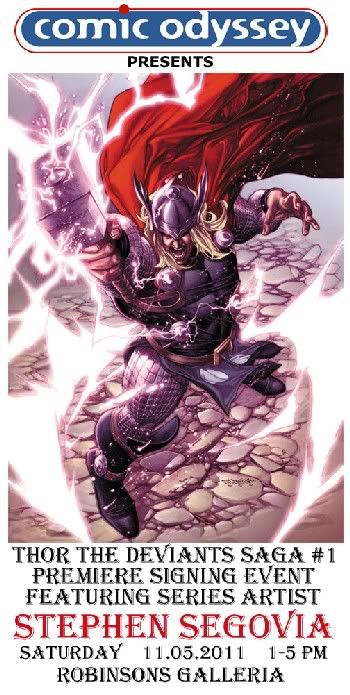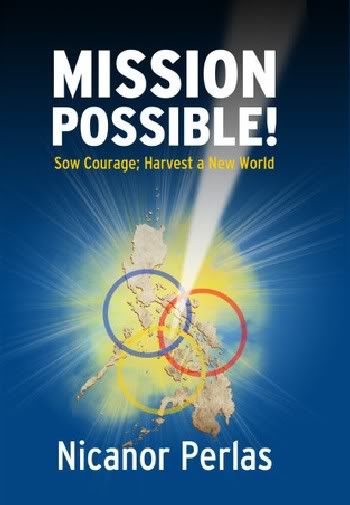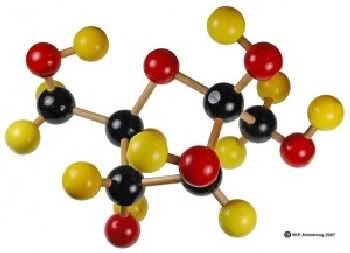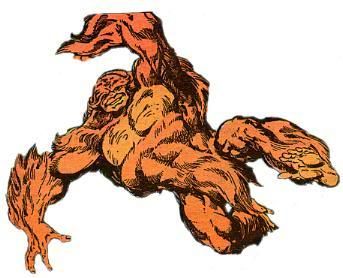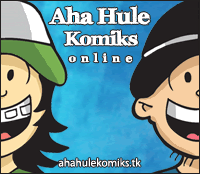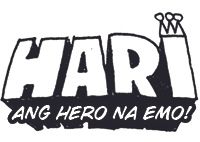
(NaturalNews) Dr. Luc Montagnier, the French virologist who won the Nobel Prize in 2008 for discovering the AIDS virus, has surprised the scientific community with his strong support for homeopathic medicine.
In a remarkable interview published in Science magazine of December 24, 2010, (1) Professor Luc Montagnier, has expressed support for the often maligned and misunderstood medical specialty of homeopathic medicine. Although homeopathy has persisted for 200+ years throughout the world and has been the leading alternative treatment method used by physicians in Europe, (2) most conventional physicians and scientists have expressed skepticism about its efficacy due to the extremely small doses of medicines used.
Most clinical research conducted on homeopathic medicines that has been published in peer-review journals have shown positive clinical results,(3, 4) especially in the treatment of respiratory allergies (5, 6), influenza, (7) fibromyalgia, (8, 9) rheumatoid arthritis, (10) childhood diarrhea, (11) post-surgical abdominal surgery recovery, (12) attention deficit disorder, (13) and reduction in the side effects of conventional cancer treatments. (14) In addition to clinical trials, several hundred basic science studies have confirmed the biological activity of homeopathic medicines. One type of basic science trials, called in vitro studies, found 67 experiments (1/3 of them replications) and nearly 3/4 of all replications were positive. (15, 16)
In addition to the wide variety of basic science evidence and clinical research, further evidence for homeopathy resides in the fact that they gained widespread popularity in the U.S. and Europe during the 19th century due to the impressive results people experienced in the treatment of epidemics that raged during that time, including cholera, typhoid, yellow fever, scarlet fever, and influenza.
Montagnier, who is also founder and president of the World Foundation for AIDS Research and Prevention, asserted, "I can't say that homeopathy is right in everything. What I can say now is that the high dilutions (used in homeopathy) are right. High dilutions of something are not nothing. They are water structures which mimic the original molecules."
Here, Montagnier is making reference to his experimental research that confirms one of the controversial features of homeopathic medicine that uses doses of substances that undergo sequential dilution with vigorous shaking in-between each dilution. Although it is common for modern-day scientists to assume that none of the original molecules remain in solution, Montagnier's research (and other of many of his colleagues) has verified that electromagnetic signals of the original medicine remains in the water and has dramatic biological effects.
Montagnier has just taken a new position at Jiaotong University in Shanghai, China (this university is often referred to as "China's MIT"), where he will work in a new institute bearing his name. This work focuses on a new scientific movement at the crossroads of physics, biology, and medicine: the phenomenon of electromagnetic waves produced by DNA in water. He and his team will study both the theoretical basis and the possible applications in medicine.
Montagnier's new research is investigating the electromagnetic waves that he says emanate from the highly diluted DNA of various pathogens. Montagnier asserts, "What we have found is that DNA produces structural changes in water, which persist at very high dilutions, and which lead to resonant electromagnetic signals that we can measure. Not all DNA produces signals that we can detect with our device. The high-intensity signals come from bacterial and viral DNA."
Montagnier affirms that these new observations will lead to novel treatments for many common chronic diseases, including but not limited to autism, Alzheimer's disease, Parkinson's disease, and multiple sclerosis.
Montagnier first wrote about his findings in 2009, (17) and then, in mid-2010, he spoke at a prestigious meeting of fellow Nobelists where he expressed interest in homeopathy and the implications of this system of medicine. (18)
French retirement laws do not allow Montagnier, who is 78 years of age, to work at a public institute, thereby limiting access to research funding. Montagnier acknowledges that getting research funds from Big Pharma and certain other conventional research funding agencies is unlikely due to the atmosphere of antagonism to homeopathy and natural treatment options.
Support from Another Nobel Prize winner
Montagnier's new research evokes memories one of the most sensational stories in French science, often referred to as the 'Benveniste affair.' A highly respected immunologist Dr. Jacques Benveniste., who died in 2004, conducted a study which was replicated in three other university laboratories and that was published in Nature (19). Benveniste and other researchers used extremely diluted doses of substances that created an effect on a type of white blood cell called basophils.
Although Benveniste's work was supposedly debunked, (20) Montagnier considers Benveniste a "modern Galileo" who was far ahead of his day and time and who was attacked for investigating a medical and scientific subject that orthodoxy had mistakenly overlooked and even demonized.
In addition to Benveniste and Montagnier is the weighty opinion of Brian Josephson, Ph.D., who, like Montagnier, is a Nobel Prize-winning scientist.
Responding to an article on homeopathy in New Scientist, Josephson wrote:
Regarding your comments on claims made for homeopathy: criticisms centered around the vanishingly small number of solute molecules present in a solution after it has been repeatedly diluted are beside the point, since advocates of homeopathic remedies attribute their effects not to molecules present in the water, but to modifications of the water's structure.
Simple-minded analysis may suggest that water, being a fluid, cannot have a structure of the kind that such a picture would demand. But cases such as that of liquid crystals, which while flowing like an ordinary fluid can maintain an ordered structure over macroscopic distances, show the limitations of such ways of thinking. There have not, to the best of my knowledge, been any refutations of homeopathy that remain valid after this particular point is taken into account.
A related topic is the phenomenon, claimed by Jacques Benveniste's colleague Yolene Thomas and by others to be well established experimentally, known as "memory of water." If valid, this would be of greater significance than homeopathy itself, and it attests to the limited vision of the modern scientific community that, far from hastening to test such claims, the only response has been to dismiss them out of hand. (21)
Following his comments Josephson, who is an emeritus professor of Cambridge University in England, was asked by New Scientist editors how he became an advocate of unconventional ideas. He responded:
I went to a conference where the French immunologist Jacques Benveniste was talking for the first time about his discovery that water has a 'memory' of compounds that were once dissolved in it -- which might explain how homeopathy works. His findings provoked irrationally strong reactions from scientists, and I was struck by how badly he was treated. (22)
Josephson went on to describe how many scientists today suffer from "pathological disbelief;" that is, they maintain an unscientific attitude that is embodied by the statement "even if it were true I wouldn't believe it."
Even more recently, Josephson wryly responded to the chronic ignorance of homeopathy by its skeptics saying, "The idea that water can have a memory can be readily refuted by any one of a number of easily understood, invalid arguments."
In the new interview in Science, Montagnier also expressed real concern about the unscientific atmosphere that presently exists on certain unconventional subjects such as homeopathy, "I am told that some people have reproduced Benveniste's results, but they are afraid to publish it because of the intellectual terror from people who don't understand it."
Montagnier concluded the interview when asked if he is concerned that he is drifting into pseudoscience, he replied adamantly: "No, because it's not pseudoscience. It's not quackery. These are real phenomena which deserve further study."
The Misinformation That Skeptics Spread
It is remarkable enough that many skeptics of homeopathy actually say that there is "no research" that has shows that homeopathic medicines work. Such statements are clearly false, and yet, such assertions are common on the Internet and even in some peer-review articles. Just a little bit of searching can uncover many high quality studies that have been published in highly respected medical and scientific journals, including the Lancet, BMJ, Pediatrics, Pediatric Infectious Disease Journal, Chest and many others. Although some of these same journals have also published research with negative results to homeopathy, there is simply much more research that shows a positive rather than negative effect.
Misstatements and misinformation on homeopathy are predictable because this system of medicine provides a viable and significant threat to economic interests in medicine, let alone to the very philosophy and worldview of biomedicine. It is therefore not surprising that the British Medical Association had the sheer audacity to refer to homeopathy as "witchcraft." It is quite predictable that when one goes on a witch hunt, one inevitable finds "witches," especially when there are certain benefits to demonizing a potential competitor (homeopathy plays a much larger and more competitive role in Europe than it does in the USA).
Skeptics of homeopathy also have long asserted that homeopathic medicines have "nothing" in them because they are diluted too much. However, new research conducted at the respected Indian Institutes of Technology has confirmed the presence of "nanoparticles" of the starting materials even at extremely high dilutions. Researchers have demonstrated by Transmission Electron Microscopy (TEM), electron diffraction and chemical analysis by Inductively Coupled Plasma-Atomic Emission Spectroscopy (ICP-AES), the presence of physical entities in these extreme dilutions. (24) In the light of this research, it can now be asserted that anyone who says or suggests that there is "nothing" in homeopathic medicines is either simply uninformed or is not being honest.
Because the researchers received confirmation of the existence of nanoparticles at two different homeopathic high potencies (30C and 200C) and because they tested four different medicines (Zincum met./zinc; Aurum met. /gold; Stannum met./tin; and Cuprum met./copper), the researchers concluded that this study provides "concrete evidence."
Although skeptics of homeopathy may assume that homeopathic doses are still too small to have any biological action, such assumptions have also been proven wrong. The multi-disciplinary field of small dose effects is called "hormesis," and approximately 1,000 studies from a wide variety of scientific specialties have confirmed significant and sometimes substantial biological effects from extremely small doses of certain substances on certain biological systems.
A special issue of the peer-review journal, Human and Experimental Toxicology (July 2010), devoted itself to the interface between hormesis and homeopathy. (25) The articles in this issue verify the power of homeopathic doses of various substances.
In closing, it should be noted that skepticism of any subject is important to the evolution of science and medicine. However, as noted above by Nobelist Brian Josephson, many scientists have a "pathological disbelief" in certain subjects that ultimately create an unhealthy and unscientific attitude blocks real truth and real science. Skepticism is at its best when its advocates do not try to cut off research or close down conversation of a subject but instead explore possible new (or old) ways to understand and verify strange but compelling phenomena. We all have this challenge as we explore and evaluate the biological and clinical effects of homeopathic medicines.
REFERENCES:
(1) Enserink M, Newsmaker Interview: Luc Montagnier, French Nobelist Escapes "Intellectual Terror" to Pursue Radical Ideas in China. Science 24 December 2010: Vol. 330 no. 6012 p. 1732. DOI: 10.1126/science.330.6012.1732
(2) Ullman D. Homeopathic Medicine: Europe's #1 Alternative for Doctors. http://www.huffingtonpost.com/dana-...
(3) Linde L, Clausius N, Ramirez G, et al., "Are the Clinical Effects of Homoeopathy Placebo Effects? A Meta-analysis of Placebo-Controlled Trials," Lancet, September 20, 1997, 350:834-843.
(4) Ludtke R, Rutten ALB. The conclusions on the effectiveness of homeopathy highly depend on the set of analyzed trials. Journal of Clinical Epidemiology. October 2008. doi: 10.1016/j.jclinepi.2008.06/015.
(5) Taylor, MA, Reilly, D, Llewellyn-Jones, RH, et al., Randomised controlled trial of homoeopathy versus placebo in perennial allergic rhinitis with overview of four trial Series, BMJ, August 19, 2000, 321:471-476.
(6) Ullman, D, Frass, M. A Review of Homeopathic Research in the Treatment of Respiratory Allergies. Alternative Medicine Review. 2010:15,1:48-58. http://www.thorne.com/altmedrev/.fu...
(7) Vickers AJ. Homoeopathic Oscillococcinum for preventing and treating influenza and influenza-like syndromes. Cochrane Reviews. 2009.
(8) Bell IR, Lewis II DA, Brooks AJ, et al. Improved clinical status in fibromyalgia patients treated with individualized homeopathic remedies versus placebo, Rheumatology. 2004:1111-5.
(9) Fisher P, Greenwood A, Huskisson EC, et al., "Effect of Homoeopathic Treatment on Fibrositis (Primary Fibromyalgia)," BMJ, 299(August 5, 1989):365-6.
(10) Jonas, WB, Linde, Klaus, and Ramirez, Gilbert, "Homeopathy and Rheumatic Disease," Rheumatic Disease Clinics of North America, February 2000,1:117-123.
(11) Jacobs J, Jonas WB, Jimenez-Perez M, Crothers D, Homeopathy for Childhood Diarrhea: Combined Results and Metaanalysis from Three Randomized, Controlled Clinical Trials, Pediatr Infect Dis J, 2003;22:229-34.
(12) Barnes, J, Resch, KL, Ernst, E, "Homeopathy for Post-Operative Ileus: A Meta-Analysis," Journal of Clinical Gastroenterology, 1997, 25: 628-633.
(13) M, Thurneysen A. Homeopathic treatment of children with attention deficit hyperactivity disorder: a randomised, double blind, placebo controlled crossover trial. Eur J Pediatr. 2005 Dec;164(12):758-67. Epub 2005 Jul 27.
(14) Kassab S, Cummings M, Berkovitz S, van Haselen R, Fisher P. Homeopathic medicines for adverse effects of cancer treatments. Cochrane Database of Systematic Reviews 2009, Issue 2.
(15) Witt CM, Bluth M, Albrecht H, Weisshuhn TE, Baumgartner S, Willich SN. The in vitro evidence for an effect of high homeopathic potencies--a systematic review of the literature. Complement Ther Med. 2007 Jun;15(2):128-38. Epub 2007 Mar 28.
(16) Endler PC, Thieves K, Reich C, Matthiessen P, Bonamin L, Scherr C, Baumgartner S. Repetitions of fundamental research models for homeopathically prepared dilutions beyond 10-23: a bibliometric study. Homeopathy, 2010; 99: 25-36.
(17) Luc Montagnier, Jamal Aissa, Stephane Ferris, Jean-Luc Montagnier, Claude Lavallee, Electromagnetic Signals Are Produced by Aqueous Nanostructures Derived from Bacterial DNA Sequences. Interdiscip Sci Comput Life Sci (2009) 1: 81-90.
http://www.springerlink.com/content...
(18) Nobel laureate gives homeopathy a boost. The Australian. July 5, 2010. http://www.theaustralian.com.au/new...
(19) Davenas E, Beauvais F, Amara J, et al. (June 1988). "Human basophil degranulation triggered by very dilute antiserum against IgE". Nature 333 (6176): 816-8.
(20) Maddox J (June 1988). "Can a Greek tragedy be avoided?". Nature 333 (6176): 795-7.
(21) Josephson, B. D., Letter, New Scientist, November 1, 1997.
(22) George A. Lone Voices special: Take nobody's word for it. New Scientist. December 9, 2006.
(23) Personal communication. Brian Josephson to Dana Ullman. January 5, 2011.
(24) Chikramane PS, Suresh AK, Bellare JR, and Govind S. Extreme homeopathic dilutions retain starting materials: A nanoparticulate perspective. Homeopathy. Volume 99, Issue 4, October 2010, 231-242.
(25) Human and Experimental Toxicology, July 2010: http://het.sagepub.com/content/vol2...
To access free copies of these articles, click this.
Source: http://www.naturalnews.com/031210_Luc_Montagnier_Homeopathy.html#ixzz1d8m8e7Mo



